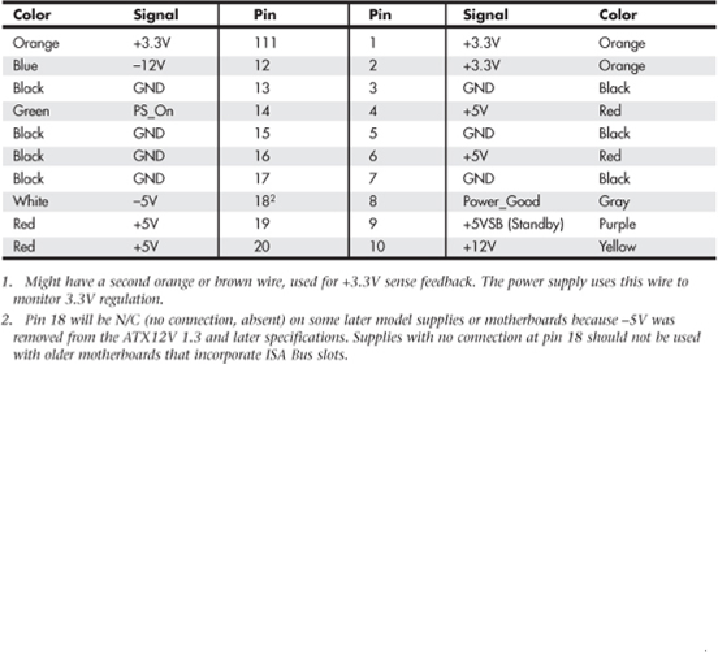Hardware Reference
In-Depth Information
Figure18.21
showsaviewoftheconnectorasifyouwerelookingatitfacingtheterminal
end.
Note
The ATX supply features several voltages and signals not seen on earlier AT/LPX designs,
such as the +3.3V, PS_On, and +5V_Standby. Therefore, adapting a standard LPX form
factor supply to make it work properly in an ATX system is impossible, even though the
shapes of the power supplies are virtually identical.
However, because ATX is a superset of the older LPX power supply standard, you can use a
connector adapter to allow an ATX power supply to connect to an older motherboard using
AT/LPX connectors.
Oneofthemostimportantissueswithrespecttopowersupplyconnectorsisthecapability
todeliversufficientpowertothemotherboardwithoutoverheating.Itdoesn'thelptohave
a500-wattpowersupplyifthecablesandconnectorssupplyingpowertothemotherboard
can handle only 250 watts before they start to melt. When talking about specific connect-
ors, the current rating is stated in amperes per circuit, which is a measure of the amount
of current that can be passed through a mated terminal that will allow no more than a
30°C (86°F) temperature rise over ambient 22°C (72°F). In other words, at a normal am-
bient temperature of 22°C (72°F), when operating under the maximum rated current load,
the temperature of the mated terminals will not exceed 52°C (126°F). Because the ambi-
ent temperature inside a PC can run 40°C (104°F) or higher, running power connectors at
maximum ratings can result in extremely high temperatures in the connectors.




